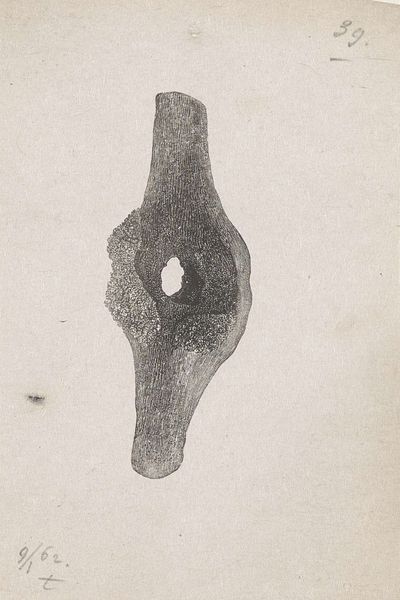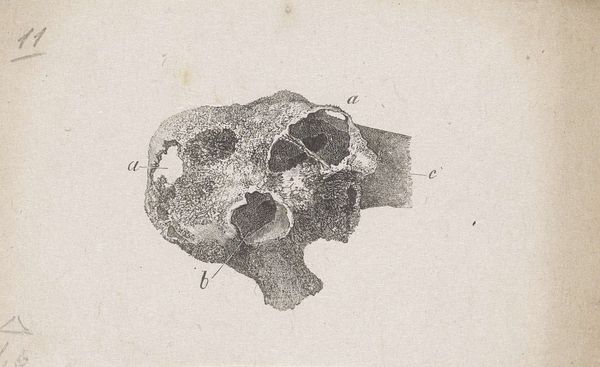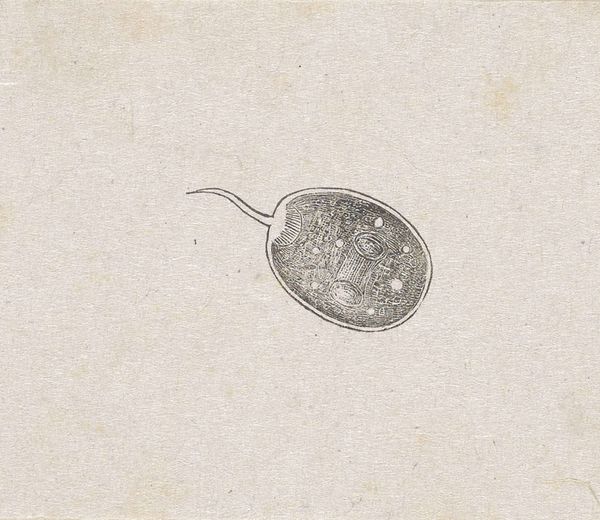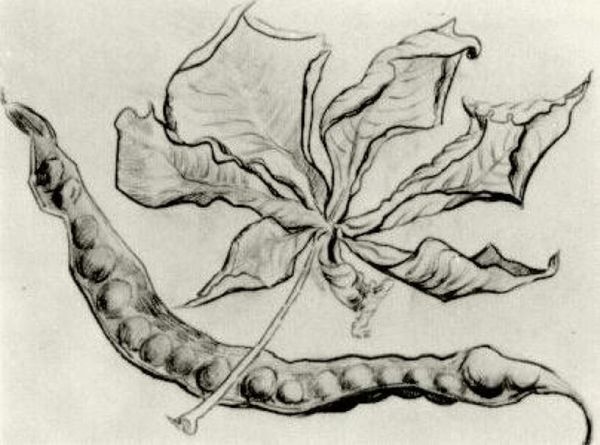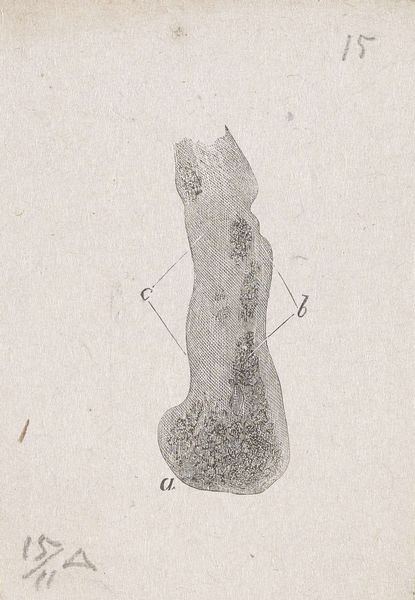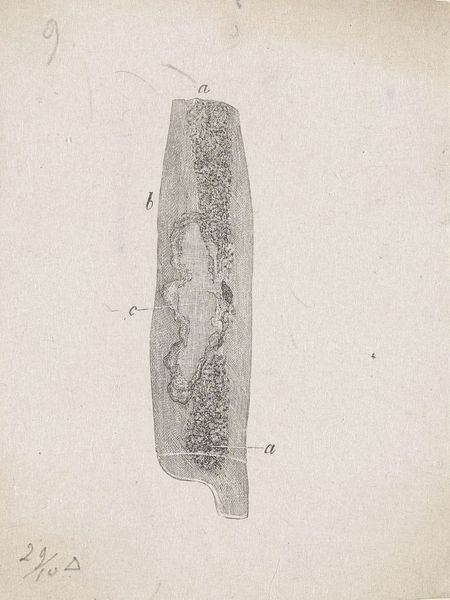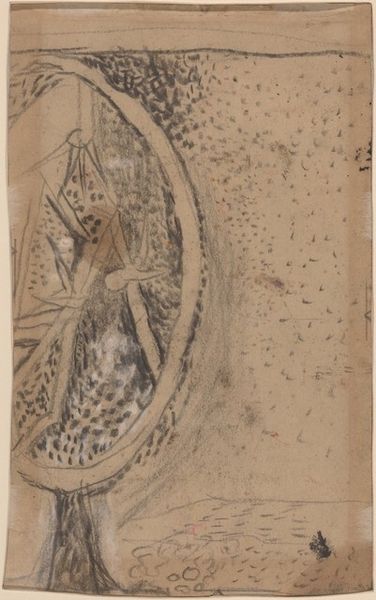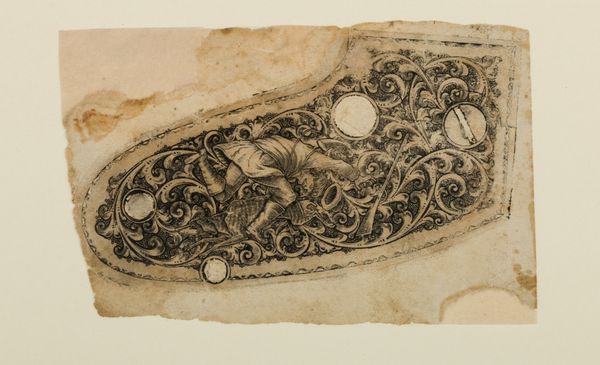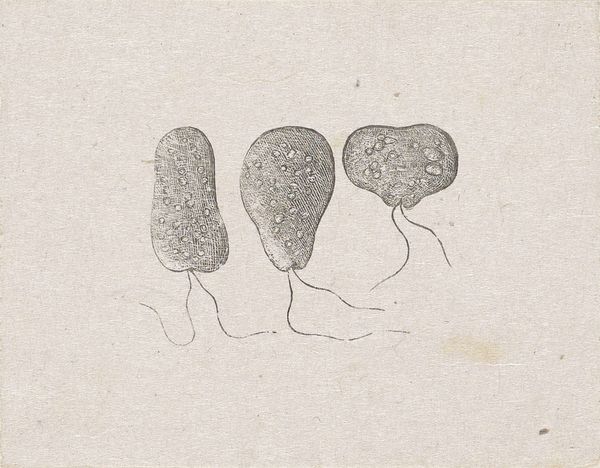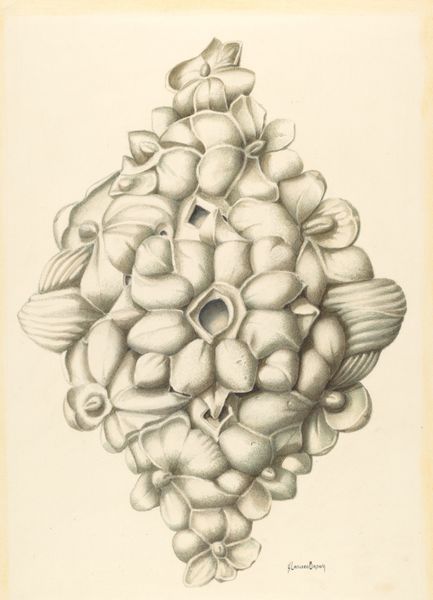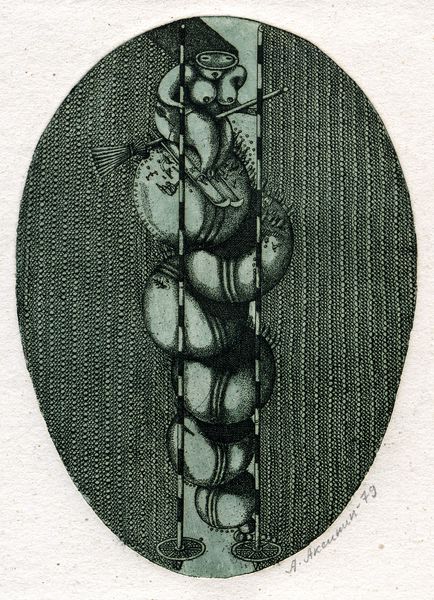
drawing, ink
#
drawing
#
cubism
#
ink
#
geometric
Copyright: Fernand Leger,Fair Use
Curator: Fernand Léger's "Study Nuts," created in 1931, offers a fascinating lens through which to view the everyday. Executed with ink on paper, the drawing typifies Léger's cubist style. Editor: Wow, a lone nut! I mean, it kind of makes you wonder, doesn’t it? All that energy focused on one single walnut. It almost feels… monumental. And I love the cross-hatching. Curator: The choice of a humble subject like a nut reveals a deliberate democratization of art, challenging traditional hierarchies of subject matter. Léger found beauty and significance in the mundane, echoing similar approaches within the broader context of early 20th-century avant-garde movements. Editor: Exactly! It's saying, "Look! Even a nut can be epic!" It feels like a brain in its protective case… You know, it makes you ponder nature's incredible packaging. So compact and efficient. The slightly unsettling resemblance of the kernels in the nutshell and those inside our brains emphasizes the idea that the structure of nature are echoes of human anatomy. Curator: Indeed. We can think of the walnut as a symbol of hidden potential, of contained energy and resources waiting to be unlocked—or maybe, to build on your analogy, it could relate to the commodification of knowledge. Editor: Oh, I like that! A commodified brain! The possibilities feel nutty indeed. But I love how the drawing itself emphasizes form, almost dissecting it before it was cool. Curator: Precisely, this dissection and reformulation is key to understanding Léger's engagement with the cubist principles of fragmentation and reassembly. The artist takes the familiar and renders it newly visible, urging the viewer to consider what we often overlook. And in a time between wars when European people found it difficult to make a living, every single item could provide value and hope, even a nutshell Editor: What’s brilliant, and a bit cheeky, is taking something so small, so easily dismissed, and making it… important. Makes you realize you should look closer. Curator: It is indeed an invitation to a more considered perception. The simplicity of the subject becomes a prompt for deeper reflection on both artistic intention and social context. Editor: Yeah, it's a reminder that there’s more than meets the eye, even in a humble nut.
Comments
No comments
Be the first to comment and join the conversation on the ultimate creative platform.
